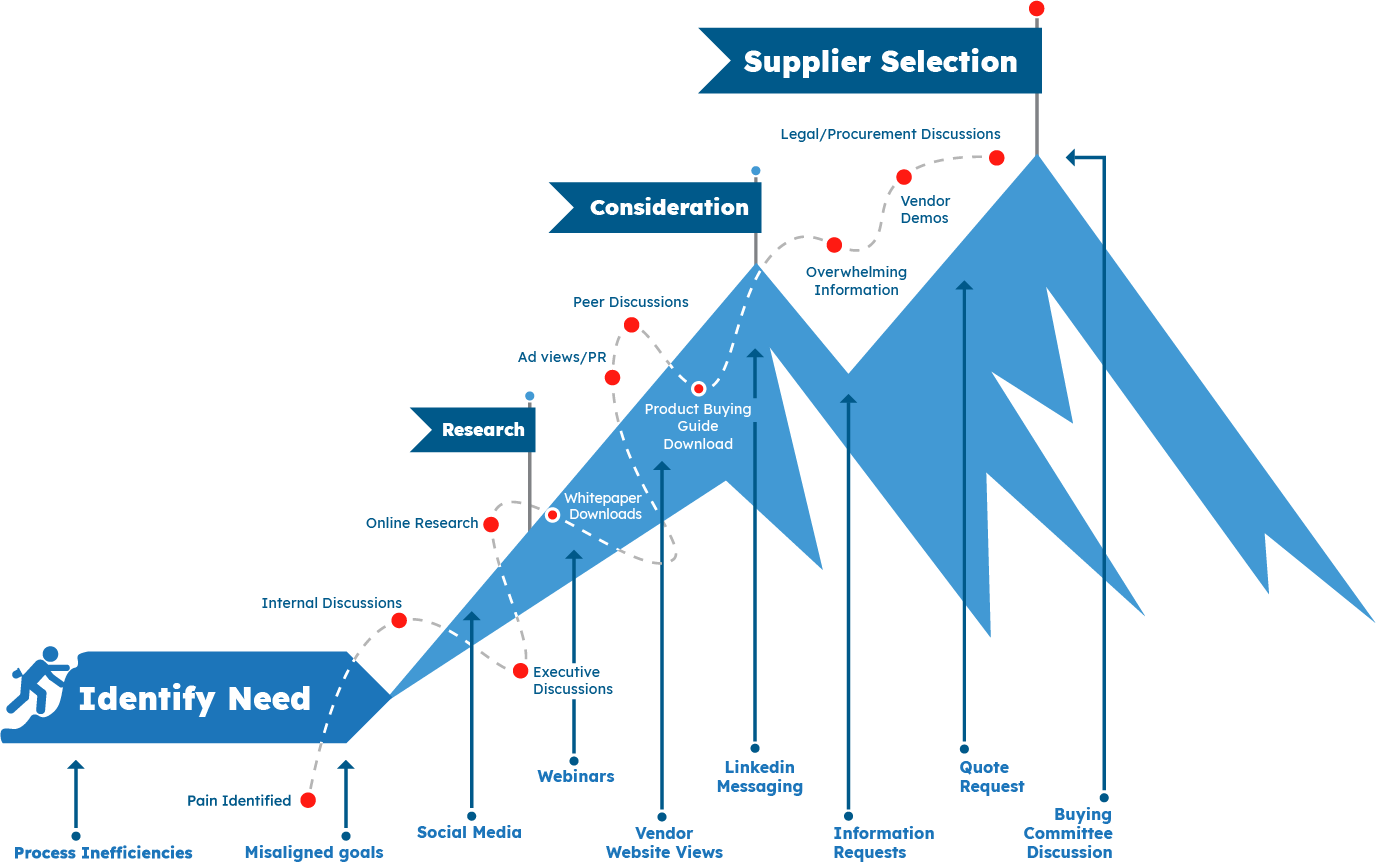Introduction
The buyer’s journey has undergone a significant transformation in recent years. In today’s digital age, empowered buyers have access to a wealth of information and resources, enabling them to conduct extensive research before even reaching out to a sales team.
It’s crucial for businesses to understand this shift and adapt their sales and marketing strategies accordingly. In this whitepaper, we will explore the fascinating statistic that
70%
The Empowered Age of Information
The advent of the internet and digital technologies has empowered buyers with a vast amount
of information at their fingertips. Prospects can now research products, services, and solutions
on search engines, visit websites, read customer reviews, and engage with industry thought
leaders through social media platforms.
This wealth of information allows them to educate themselves, compare options,
and form opinions before ever speaking to a sales representative.
As a result, the initial stages of the buyer’s journey are completed independentlyby the buyer.

Building Trust and Credibility
Buyers have become more skeptical and discerning than ever before. They seek trustworthy and credible sources to guide their decision-making process.
By investing time and effort into:
- Developing Thought Leadership Content
- Educational Resources
- Case Studies
Personalized and Relevant Content
To capture buyers’ attention during the early stages of the journey, businesses must create and distribute personalized and relevant content.
- Blog Posts
- Videos
- Podcasts
- Whitepapers
- Webinars
This content establishes the business as a trusted advisor, offering valuable information that helps buyers make informed decisions.
Sales Enablement and Collaboration
While the sales team’s involvement may occur later in the buyer’s journey, their role remains crucial. Sales enablement becomes essential in equipping sales representatives with the tools, resources, and knowledge required
to engage with prospects effectively. Collaborating closely with marketing teams, sales can align their messaging and value propositions with the content and insights provided earlier in the journey.
This ensures a seamless transition and a consistent customer experience from the initial research phase to the sales engagement.


Focusing on Relationship Building
Since the sales team’s time with prospects is limited to approximately 17% of the buyer’s journey, it becomes essential to make every interaction count.
Rather than focusing solely on the transactional aspects, sales professionals must prioritize building meaningful relationships with prospects.
By understanding their specific needs, addressing concerns, and providing personalized solutions, sales teams can differentiate themselves and establish a connection that goes beyond a simple product or service exchange.
Conclusion
The shift in the buyer’s journey, with 70% occurring prior to engaging with sales and only 17% dedicated to interactions with the sales team, signifies the need for businesses to adapt their sales and marketing strategies.
Embracing the empowered age of information, delivering personalized and relevant content, building trust, and enabling sales teams to provide exceptional experiences are all critical elements for success in this new landscape.
By understanding and accommodating the buyer’s journey, businesses can position themselves
as trusted advisors, form lasting relationships,
and thrive in an evolving marketplace.

